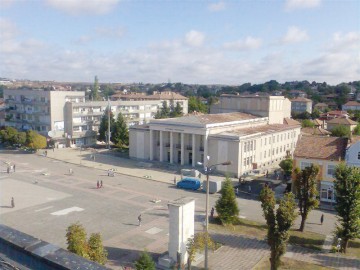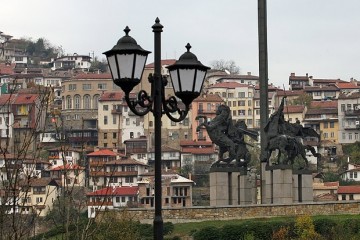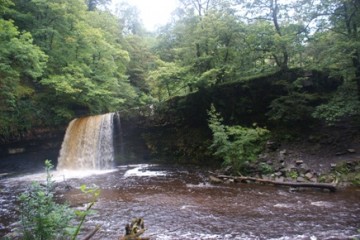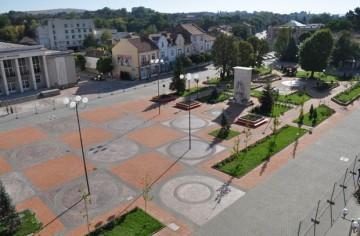Information about Pavlikeni
Pavlikeni Properties Municipality of Pavlikeni is located in central northern Bulgaria and it is of third functional type. Located in the North Central region of the country, it occupies the west central part of Veliko Tarnovo district and borders the municipalities of Veliko Tarnovo, Svishtov, Polski Trumbesh, Sevlievo, Suhindol and Levski. Its area is 622.569 square kilometers, which is 13.1 percent of the region. The city is an important railway center for the railway line Sofia-Varna. Pass through the city several important roads that connect the towns of Veliko Turnovo, Sevlievo, Pleven, Svishtov, Polski Trumbesh and Ruse.
Municipality of Pavlikeni is located in central northern Bulgaria and it is of third functional type. Located in the North Central region of the country, it occupies the west central part of Veliko Tarnovo district and borders the municipalities of Veliko Tarnovo, Svishtov, Polski Trumbesh, Sevlievo, Suhindol and Levski. Its area is 622.569 square kilometers, which is 13.1 percent of the region. The city is an important railway center for the railway line Sofia-Varna. Pass through the city several important roads that connect the towns of Veliko Turnovo, Sevlievo, Pleven, Svishtov, Polski Trumbesh and Ruse.The municipality includes 20 villages, of which number 500 residents are five settlements to 1000 people - seven settlements to 1500 inhabitants - four settlements to 2000 inhabitants - two locations. With over 2000 inhabitants is the town of Byala Cherkva and Pavlikeni with over 13,000 inhabitants. The urban area of the municipality occupies an area of 39935 acres.
Within the municipality are included the towns Pavlikem and Byala Cherkva and village of Batak, Butovo, Vishovgrad, Varbovka, Gorna Lipnitsa, Dolna Lipnitsa, Dimcha, Daskot, Karaisen, Lesicheri, Mihaltsi, Musina, Neda, Paskalevets, Patresh, Rosica, Slomer, Stambolovo.
 Pavlikeni region was inhabited since ancient times. During archaeological excavations have been found traces of new Stone and Stone-Copper Age (VI - IV century BC). Later inhabitants of the area were the Thracian tribes who fought constant wars with not a conqueror. The most severe was the struggle with the Romans, which lasted for a century and a half and ended with the final conquest of the Thracian lands.
Pavlikeni region was inhabited since ancient times. During archaeological excavations have been found traces of new Stone and Stone-Copper Age (VI - IV century BC). Later inhabitants of the area were the Thracian tribes who fought constant wars with not a conqueror. The most severe was the struggle with the Romans, which lasted for a century and a half and ended with the final conquest of the Thracian lands.Pavlikeni is situated in northern Bulgaria, in the central part of the Danube valley, 230 km northeast of Sofia and 43 km northwest from the town of Veliko Tarnovo.
The name Pavlikem the city received from the Paulicians, which was one of the most significant medieval socio-religious movements of the rural masses in the Southeast. The first settlers - Catholics settled in the area during the second half of the XIV century, driven by the Ottoman invasion of the Balkans and the official Orthodox Church founded a settlement was called Marinopoltsi but Muslims and Orthodox Christians from the surrounding villages name it with the name of the sect - pavlikiani. Marinopoltsi found in the reports of the Catholic missionaries in more than 20 maps of our lands from the XVII and XVIII century, while in the Ottoman archives and records referred to by the name Paulicians. Historical sources show that the two names were used by both centuries.
After the Liberation (1878) as a result of internal migration and agrarian revolution ethnic appearance Pavlikeni changed completely. The village was inhabited by Bulgarian households that came from neighboring villages and mountains. Many of the new settlers were Christian Bulgarians who took direct part in the struggle for national liberation, independence and religious development of Bulgarian education. They give the town revolutionary spirit and contributed to its future development and prosperity.
 In the last decade of the XIX century Pavlikeni brings its development ahead of neighboring villages and gradually adopt the new features. This contributes to its favorable geographical location at the crossroads between major cities, the fertile valley of the River Rosica, but above all the entrepreneurship of the local population. Municipality of Pavlikeni was initially represented by the village Pavlikeni, which was managed by Pavlikeni rural municipal council. The first Mayor was Nacho Cavata - one of the first settlers. After the liberation in 1894 Pavlikeni Municipality was within Paskalevski district and within Turnovo district. In 1880 Pavlikeni was populated by 580 inhabitants.
In the last decade of the XIX century Pavlikeni brings its development ahead of neighboring villages and gradually adopt the new features. This contributes to its favorable geographical location at the crossroads between major cities, the fertile valley of the River Rosica, but above all the entrepreneurship of the local population. Municipality of Pavlikeni was initially represented by the village Pavlikeni, which was managed by Pavlikeni rural municipal council. The first Mayor was Nacho Cavata - one of the first settlers. After the liberation in 1894 Pavlikeni Municipality was within Paskalevski district and within Turnovo district. In 1880 Pavlikeni was populated by 580 inhabitants.Considering the rapid development of agriculture and livestock in the area and the needs of the population of the surrounding villages, observant Pavlikeni local government in 1897 decided to open a weekly market for the animals. Three years later settled market for agricultural products. This started to attract more people from the surrounding villages, allowing for the development of trade and crafts in the Municipality. Predetermined by the flat and fertile lands of the village as the main occupation of the population is established agriculture.
Undoubtedly the most important factor that stimulates the development of Pavlikeni in the early XX century was the passage of the Central Railway Sofia-Varna and determination of Pavlikeni as one of its stations. Availability of rail (Autumn 1899) stimulated the development of the productive forces in Pavlikeni. Railway station becomes a catalyst for some sectors of agriculture such as grain production, viticulture, fruit and vegetable. Opportunities for expansion given wine, milling, poultry, ceramics. The number of types of industrial crops grown in the area. Thus, after the first decade of the XX century railway Station Pavlikeni becoming a major exporter of agricultural products in one area, situated 50-60 km radius around the Municipality. In just two decades, from the point of export rail Station Pavlikeni proved to be an important trade and transportation center, where supply and distribute a variety manufactory and colonial goods.
Pavlikeni Historical Museum is located in a beautiful two-storey building in the city center. Above the stairs of the museum has applique - mural made of different ceramic pieces.
On the first floor of the museum, a large and spacious hall, exposed works of art - large painted canvas, paintings, sculptures and more. In the hall are often made and temporary exhibitions.
On the second floor of the museum contains many exhibits tracing the development of the region from antiquity to the present day. Here you can see objects and coins from the past, national costumes and clothing, handmade fabrics and embroideries, reenactments of scenes from the life of the local people in the past (weddings, Christmas, Easter, St. Trifon's Day, etc.), tools, weapons, maps, photographs and documents relating to the history of Pavlikeni and others.
 The museum guard and a very interesting exhibit - Eternal calendar. He created more than 140 years the idea of Father Matthew Transfiguration and made of famous master woodcarver from Tryavna.
The museum guard and a very interesting exhibit - Eternal calendar. He created more than 140 years the idea of Father Matthew Transfiguration and made of famous master woodcarver from Tryavna.The museum has a well maintained back yard, where there are parts of columns found during excavations in the ancient ceramics center situated close to the city.
Musinskata cave is located in the village of Musina (in the south, almost in the village), and with a natural phenomenon Ponorite is among the main attractions of the village.
The cave is 382 meters long and is fully studied and mapped by cavers. There are two entrances - one dry and wider and the other narrower and water and consists of two parts: water and land. In the aqueous portion underground river flows, which scientists say comes from tens of kilometers. In studies it was found that the water from the spring in the cave supplies power supply network of the Roman town of Nicopolis ad Instrum. The land part is inhabited by a large bat colony Musinskata cave was declared a protected site and registered with the Ministry in 1972.
Natural phenomenon Ponorite (aka divide) is one of the main attractions of the village of Musina. Pot-holes are located about 400 meters south of the village, not far from Musinskata cave.
The phenomenon has no analogue in Bulgaria. Represents karst education - two pits, with a depth of 25 meters, connected by underground karst gallery, assuming that lead down to the galleries and Musinskata Emenska caves.
Once the abyss looked pretty scary for the local population and were traditional beliefs according to which the abyss led to lower land of the dead.
By European projects in 2006, the site and the area around it were refined and adapted for visitors. To the bottom of the abyss built stairs with railings and to them is a gazebo.
Pavlikeni region is a lovely place to live and with great hopes for good investments.
Pavlikeni Properties

